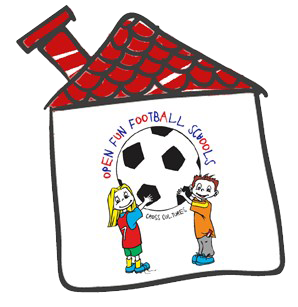Games
Foot-Tennis
The football technique training and teaching methodology has shown that coaches and theoreticians frequently use foot-tennis as an excellent tool for improving childrens basic playing techniques. Moreover, this game has proved to raise childrens motivation and develop their sense of collectiveness, communication and cooperation, devotion, and altruism. It is due to all the afore-mentioned that foot-tennis is an indispensable element of our football schools, street sport events, and seminars. This game owes its popularity to the completeness psychological and of football qualities it develops and promotes.
This game provides coaches with a wide range of possibilities to develop childrens sense of fair-play and a number of positive habits that will certainly have an impact on other segments of their lives. By teaching the children to respect the rules of the game and the opponents personality, we indirectly teach them to respect the habits, laws, and rules of life. Honesty in a game and a fair judgement are bound to have certain effects on their behaviour towards the environment they live in. When organising a foot-tennis lesson or station, we need not start with the game itself. It is very useful (if not necessary) to start with some introductory tasks (individual, pair, or group) and introduce children with the basic principles of juggling and other applicable techniques.
It would be useful and nice to play some music at this station because music helps children develop the sense of movement and coordination and encourage them to juggle not only with their feet, trunk, and head, but also with their hands along with various dance movements. Thereby, we can encourage and enable both children and coaches to improve their own movement techniques.

Field
The size of the field will depend on the number of players as well as on the width and height of the net.
Players
Each team has 1-5 players. An ideal ration would be 3:3 or 4:4; however, if there is one player more it will not harm the game.
The way to play
- The rules of the game often vary from coach to coach. However, here is a list of suggested rules you can incorporate into the game. The rules are very similar to that of a volleyball game.
- A player serves the ball from the back-line of his/her side of the field and the ball is allowed to bounce off the ground before it gets to the opponent’s half. It is also allowed (but not required) for the ball to touch the ground once before being returned.
- The ball can be served in various ways: with the inner or the outer side of the foot, with the instep, a drop-kick, or with a header.
- Each player is allowed to have as many contacts with the ball as he/she likes.
- Up to three players are allowed to touch the ball before it is passed over the net.
- You can also decide how you want the ball returned, e.g. only with the foot or with a header, with the left or right foot, with a drop-kick, etc.
- A serve is won after scoring a point; the set is finished when a team scores 15 points. If it is a draw, teams play for a two point’s advantage.
- Players have to rotate when another player gets to serve.
- The coach selects the teams and makes sure that the rules are adjusted to the technical abilities of the players.
- Players can change the rules should they wish to.
- The person serving the ball can have 2 or an unlimited number of attempts for a successful serve.
- The ball must not bounce off the ground more than once (decide how many times).
- A limited number of contacts with the ball (determine the number yourself).
Foot-tennis with forbidden zones
Mark two zones (1-2 metres wide) on the foot-tennis ground into which the ball is not allowed to fall when served or returned.
Option
A zone (1 metre wide) can be marked so as to divide one side of the playground into two parts, meaning that the players of a team are now divided into the first and the second zone. Players rotate as before, but they are not allowed to save the ball in a zone in which they are not standing at the moment.
Adjust the rules to the desires and abilities of children.
